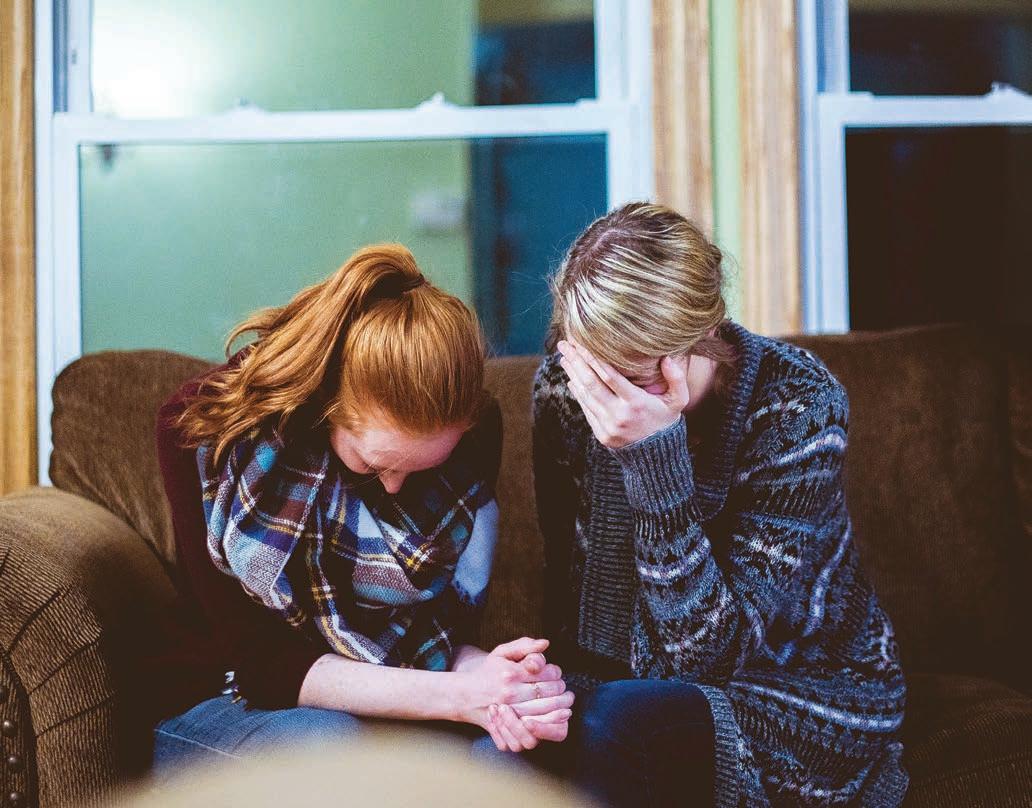
2 minute read
How we live with grief
to help guide the spirits of the ancestors back to the afterlife. During the annual Egungun festival celebrated by the Yoruba people of West Africa (and in the African diaspora, particularly in Brazil, Cuba, the Caribbean, and the US), the spirits of departed ancestors are summoned through elaborate performance rituals to seek their counsel and advice.
In the Orthodox Church, the soul of the deceased wanders the Earth for the rst two days after death, saying goodbye to the familiar places and people. On the third day, the day of burial, the soul starts a torturous journey to the afterlife during which it is faced with its sins and the demons responsible for them.
Advertisement
In Kabbalah, a form of Jewish mysticism, the dead are always present; their souls move among the living, making demands, entering and exiting their bodies, and in uencing their lives. Jewish folklore is populated by various demons that restlessly wander the Earth atoning for their past sins.
progress along predetermined stages. ere is no grief journey. Psychologists and grief experts Jason Holland and Robert Neimeyer suggest that the ve-stage model continues to persist due to the underlying cultural framework of the ‘monomyth’ — ak. the Hero’s Journey — that dominates much of our storytelling.
e Hero’s Journey is a structural model of mythological narrative (popularised by writer Joseph Campbell) in which the hero is called upon to perform a challenging deed to save himself and/ or his people. After a series of obstacles and setbacks, and with assistance from magical helpers, the hero ultimately succeeds, returning home wiser with newly acquired knowledge.
Holland and Neimeyer note that: “ is epic narrative structure is easily enough seen in popular depictions of ‘the griever’s journey,’ which like Campbell’s ‘monomyth’ commonly entail a shift in the protagonist’s spiritual centre of gravity as he or she crosses a liminal threshold into an unknown and dangerous world, typically undergoing a personal metamorphosis as the journey proceeds, before re-entering the known world transformed and bearing a special boon to confer on his or her fellows.” e monomyth model offers two things, closure and hope for triumphant, growthoriented evolution toward recovery.
But in most traditional cultures, the dead never leave the living, and the ties with the world of the dead are regularly maintained through a variety of performative rituals and celebrations. ere is no closure to grief. All Saints Day in Poland, and Día de los Muertos in Mexico, for example, are intended to rea rm our connection with the dead by visiting their graves as if they were still among us, just living separate and silent afterlives. During the Obon Festival in Japan, people display paper lanterns outdoors to guide the spirits of the dead back to Earth; they are believed to return for that time to eat the food prepared for them by their families. e lanterns are then sent down the river
In a way, these traditional religious rituals of the afterlife provide the traumatised brain with the comforting sense that the severance of the relationship brought by death is not nite but rather a temporary parting. Whether formalised through customs or religious or private performative gestures, the rituals of continuity have a neurological purpose. e human brain trains itself to predict the order and location of things — losing a person close to us disrupts this ingrained understanding. When you live with someone — say, a spouse or a child — for a long time, they become an extension of you, an extension of your virtual inner world. When they die, you are asked to imagine something your limited, human brain struggles to process.










